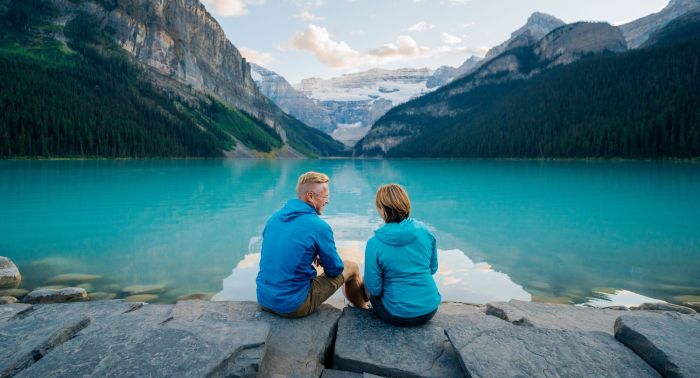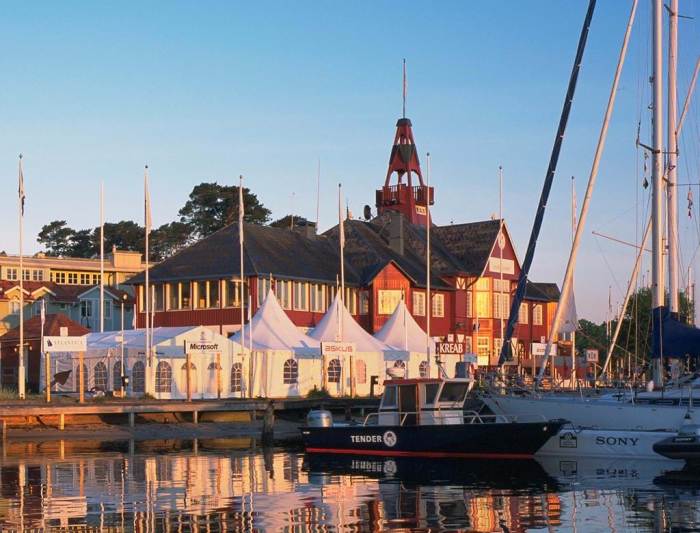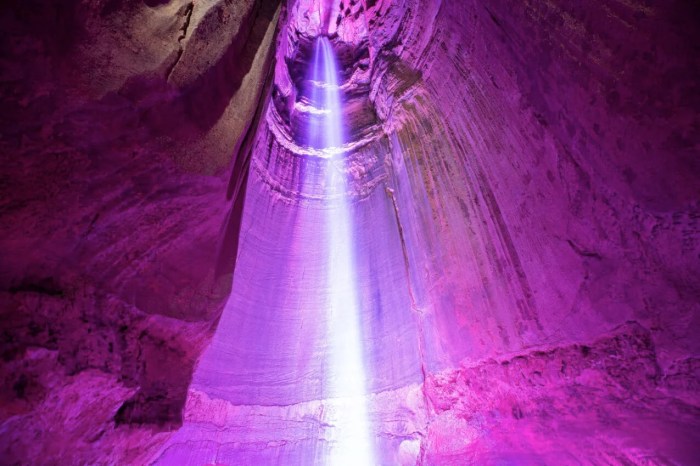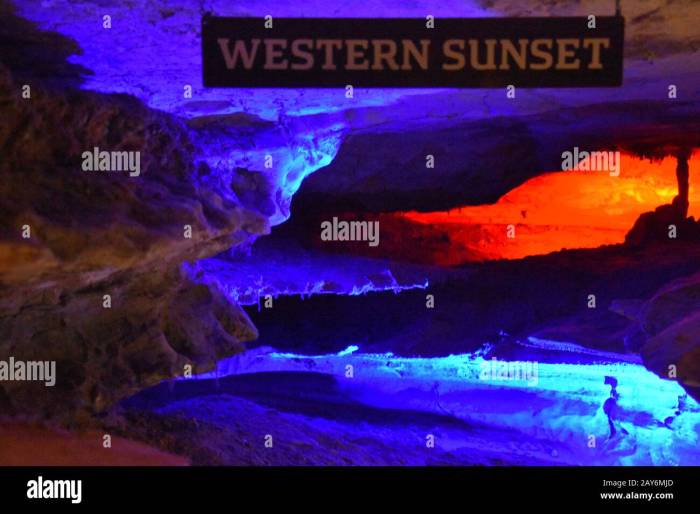Lake Geneva Wisconsin Travel Guide: Embark on a captivating journey to Lake Geneva, Wisconsin, where stunning scenery, vibrant activities, and charming local experiences await. Discover the perfect blend of relaxation and adventure in this picturesque lakeside destination. From exploring the charming shops and restaurants to enjoying the tranquil waters of Lake Geneva, this guide will equip you with the essential information to plan your unforgettable trip.
This comprehensive guide delves into everything you need to know about Lake Geneva, from accommodation options to dining experiences, activities, and local culture. We’ll explore the best ways to get around, highlight must-see sights, and offer tips to maximize your time and budget. Get ready for an immersive Wisconsin adventure!
Introduction to Lake Geneva, Wisconsin
Nestled in the heart of southeastern Wisconsin, Lake Geneva is a charming lakeside destination renowned for its stunning scenery, luxurious resorts, and vibrant community spirit. Boasting a picturesque lakefront, the area offers a variety of activities for visitors of all ages, from leisurely strolls along the shore to exhilarating water sports. More than just a weekend getaway, Lake Geneva provides a unique blend of relaxation and adventure, attracting both locals and tourists alike.
With a rich history dating back to the mid-19th century, Lake Geneva’s allure stems from its transformation into a popular summer resort destination. The area’s natural beauty, coupled with the development of elegant hotels and charming shops, cemented its position as a premier getaway spot. Today, this legacy continues, with a mix of historic architecture and modern amenities, creating a captivating atmosphere that resonates with visitors.
Key Features and Attractions
Lake Geneva’s appeal lies in its diverse offerings. From its iconic lakefront, dotted with luxurious homes and charming cottages, to the numerous shops and restaurants lining the streets, there’s something for everyone. The area’s vibrant arts scene, with its galleries and studios, complements the natural beauty, creating a holistic experience.
- Lake Geneva’s beauty: The lake itself is a major draw, offering opportunities for boating, fishing, swimming, and simply enjoying the serene views. The expansive shoreline provides ample space for leisurely strolls and picnics, with scenic pathways perfect for exploring the area’s natural charm.
- Historic architecture: The area’s historic architecture, from Victorian-era mansions to charming cottages, provides a glimpse into the area’s rich past. These structures, often meticulously maintained, contribute to the overall charm and aesthetic appeal of the region.
- Resort scene: Lake Geneva is renowned for its upscale resorts and hotels. These establishments offer a range of amenities, including luxurious accommodations, fine dining experiences, and various recreational activities, catering to a wide spectrum of travelers.
- Local shops and restaurants: The abundance of unique shops and restaurants in the area contributes to the vibrant atmosphere. These businesses offer a diverse range of products and culinary experiences, enriching the visitor’s overall experience.
Historical Context
Lake Geneva’s history is interwoven with the area’s natural beauty and the arrival of early settlers. The region’s appeal as a summer resort destination evolved over time, fueled by the development of infrastructure and the increasing popularity of leisure travel. Today, this rich past continues to shape the area’s character.
“The development of Lake Geneva as a resort destination was significantly influenced by the arrival of the railroad, which facilitated easier access and transportation for tourists.”
The early 1800s saw the first settlements around the lake, and as transportation improved, so did the area’s popularity. The arrival of the railroad in the mid-1800s marked a turning point, making it easier for visitors to reach the area, which accelerated its growth as a summer resort.
Overall Atmosphere and Vibe
The overall atmosphere of Lake Geneva is one of tranquility and sophistication. The combination of picturesque scenery, luxurious accommodations, and a variety of activities creates a vibrant yet relaxed ambiance. This distinctive atmosphere, combining elegance and natural beauty, contributes significantly to the region’s appeal.
The area’s vibrant community, the charming shops, and the variety of restaurants and activities contribute to the welcoming and engaging environment. This is a place where one can easily combine relaxation with exploration and discovery.
Accommodation Options
Lake Geneva offers a wide array of lodging options to suit every taste and budget. From cozy vacation rentals to luxurious resorts, you’ll find the perfect place to unwind and enjoy the charm of this picturesque destination. Choosing the right accommodation is key to maximizing your Lake Geneva experience, whether you’re traveling solo, with family, or with friends.Finding the perfect place to stay can often make or break a trip, especially when visiting a popular tourist destination like Lake Geneva.
Understanding the various options available, their price points, and the amenities they provide allows you to make informed decisions and ensure your stay aligns with your expectations and needs.
Hotel Accommodations
Hotels in Lake Geneva provide a variety of amenities and service levels, catering to different preferences. Chain hotels typically offer standard features like swimming pools, fitness centers, and restaurants, while boutique hotels often provide a more personalized and unique experience. Price ranges for hotels typically span from mid-range to luxury, depending on the hotel’s location, amenities, and reputation.
Resorts
Lake Geneva resorts often feature a more comprehensive package of amenities, encompassing multiple facilities and services. These may include private beaches, swimming pools, spas, and even water sports facilities. The price range for resorts is generally higher than for hotels, reflecting the expanded services and often larger property size. Consider the amenities included when evaluating the value of a resort stay.
Vacation Rentals
Vacation rentals provide a more home-like atmosphere, allowing you to cook meals and enjoy more space for family or friends. They typically offer kitchens, living rooms, and multiple bedrooms, accommodating larger groups comfortably. Price ranges vary significantly depending on the size of the rental, its location, and the season. Often, vacation rentals offer better value for large families or groups seeking a self-sufficient stay.
Airbnb
Airbnb properties offer a diverse range of options, from cozy apartments to spacious houses. They provide a flexible and affordable alternative to traditional hotels or resorts. The quality and amenities vary significantly based on the host and the specific property. Prices often align with the type of property, its location, and the time of year. Many Airbnb rentals provide excellent value for the price, particularly for those seeking a more local and personalized experience.
Summary Table of Accommodation Options
| Accommodation Type | Location | Price Range | Amenities |
|---|---|---|---|
| Hotels | Downtown, Lakefront, various areas | Mid-range to Luxury | Swimming pools, fitness centers, restaurants, potentially business services |
| Resorts | Lakefront, secluded areas | High-end | Private beaches, swimming pools, spas, water sports, often restaurants, and more comprehensive packages |
| Vacation Rentals | Various neighborhoods | Variable, often more affordable for larger groups | Kitchens, living rooms, multiple bedrooms, potentially fireplaces or other features |
| Airbnb | Various neighborhoods, including downtown and lakefront | Variable, often affordable | Amenities vary greatly, but often include kitchens, basic furniture, and common areas |
Activities and Attractions
Lake Geneva, Wisconsin offers a plethora of activities for every kind of traveler, from families seeking fun in the sun to couples looking for romantic getaways. Whether you’re an avid golfer, a passionate boater, or simply want to enjoy the stunning scenery, this charming lakefront town has something to captivate everyone. Beyond the well-known attractions, Lake Geneva boasts hidden gems and unique experiences that add a special touch to your visit.
Boating and Water Activities
Lake Geneva is a haven for boating enthusiasts. From leisurely cruises to thrilling water sports, the lake provides ample opportunities for fun on the water. Rent a pontoon boat for a day of family fun, or try your hand at jet skiing for an exhilarating experience. Fishing is another popular activity, with many spots offering excellent catches.
The lake’s calm waters and gentle breezes create a perfect atmosphere for a relaxing afternoon on the water.
Golfing
Lake Geneva boasts a number of world-class golf courses, attracting enthusiasts from across the country. The courses are known for their challenging layouts, stunning scenery, and exceptional amenities. Whether you’re a seasoned golfer or just starting out, Lake Geneva provides the perfect backdrop for an unforgettable golfing experience. Playing a round of golf at one of these courses often involves a scenic walk along the fairways, and a well-deserved meal at the club’s restaurant.
Planning a Lake Geneva, Wisconsin getaway? Beyond the stunning scenery and charming shops, you might be surprised to find connections to the world of film. While exploring the area, you could easily incorporate a visit to the academy museum motion pictures for a fascinating look into the history of cinema. Ultimately, a trip to Lake Geneva offers a fantastic blend of outdoor adventures and cultural experiences.
Dining Experiences
Lake Geneva’s culinary scene is diverse and delightful. From casual cafes to upscale restaurants, the town offers a variety of dining options to suit every taste and budget. Many restaurants feature fresh, locally sourced ingredients, highlighting the region’s agricultural bounty. Enjoy a meal at one of the many lakefront restaurants, savoring the breathtaking views while indulging in delicious cuisine.
Consider trying the famous Lake Geneva Brewery, where local brews complement the regional culinary delights.
Unique Experiences and Hidden Gems
Beyond the popular attractions, Lake Geneva offers unique experiences and hidden gems that await discovery. Explore the historic architecture of the downtown area, wander through the charming shops, or visit one of the local art galleries. Enjoy a wine tasting at a local winery, or attend a performance at the Lake Geneva Theatre. These unique experiences allow visitors to delve deeper into the local culture and discover hidden aspects of the town.
Activities and Attractions Table
| Activity/Attraction | Description | Estimated Cost | Best Time to Visit |
|---|---|---|---|
| Boating (Pontoon Rental) | Rent a pontoon boat for a day of family fun on Lake Geneva. | $100-$500+ (depending on boat type and duration) | Spring and Summer for pleasant weather |
| Golfing (18 Holes) | Play a round of 18 holes at one of Lake Geneva’s golf courses. | $100-$250+ (green fees vary) | Spring and Fall for pleasant weather and fewer crowds |
| Dining at a Lakefront Restaurant | Enjoy a meal at a lakefront restaurant with scenic views. | $30-$100+ (depending on the restaurant) | Any time of year for a different atmosphere |
| Wine Tasting at a Local Winery | Explore local wines and vineyards for a unique experience. | $20-$50+ (tasting fees vary) | Spring and Fall for optimal weather conditions and fewer crowds |
Dining Experiences
Lake Geneva boasts a vibrant culinary scene, catering to diverse palates and preferences. From casual cafes to upscale restaurants, the area offers a wide array of dining options to satisfy every craving. Whether you’re seeking a romantic dinner for two or a family-friendly meal, you’re sure to find a perfect spot. The lakefront setting adds an extra touch of charm to the dining experience, making it a memorable part of your Lake Geneva adventure.
Culinary Diversity
Lake Geneva offers a fantastic array of cuisines, reflecting the area’s diverse population and influences. From classic American fare to international delights, there’s something for everyone. You can savor delectable Italian pasta dishes, enjoy fresh seafood, or indulge in mouthwatering Asian specialties. The culinary landscape mirrors the town’s lively atmosphere and rich history.
Notable Restaurants, Cafes, and Bars
The area features a number of noteworthy establishments, offering unique dining experiences. Lake Geneva’s charming atmosphere is enhanced by its numerous cafes, bars, and restaurants. From cozy cafes serving up delicious pastries and coffee to lively bars offering handcrafted cocktails and pub fare, there’s a place for every taste and mood. Many restaurants offer outdoor seating, perfect for enjoying the beautiful lake views.
Unique Dining Experiences
Indulge in unique dining experiences that go beyond the typical meal. Many restaurants in Lake Geneva offer special events, such as wine tastings, cooking classes, or themed dinners. This provides an opportunity to experience the area’s culture and cuisine in a more immersive way. Look for menus featuring locally sourced ingredients, reflecting the area’s commitment to freshness and quality.
Don’t miss the chance to sample regional specialties and learn about the ingredients used in the preparation of local dishes.
Restaurant Recommendations, Lake geneva wisconsin travel guide
| Restaurant Name | Cuisine Type | Ambiance | Price Range |
|---|---|---|---|
| The Lakeside Inn | American, Seafood | Elegant, Romantic | $$ |
| The Italian Place | Italian | Cozy, Family-Friendly | $ |
| The Waterfront Grill | American, Grill | Casual, Lively | $$ |
| The Brew House | American, Pub Fare | Relaxed, Lively | $ |
Note: $ = Budget-friendly, $$ = Moderate, $$$ = Upscale.
Transportation and Getting Around
Lake Geneva, with its charming shops, restaurants, and breathtaking views, is best explored with a plan for getting around. Whether you’re arriving by car, plane, or train, understanding the local transportation options is key to a smooth and enjoyable trip. This section details the various ways to reach and navigate the area, from driving directions to parking availability.Getting around Lake Geneva efficiently is essential for maximizing your time and experiences.
From navigating the town’s quaint streets to reaching the surrounding attractions, understanding the transportation landscape is crucial. This guide will help you plan your journeys with ease.
Getting to Lake Geneva
Lake Geneva is easily accessible from various points. The most common method is by car, offering flexibility for exploring the wider area. Driving directions can be found online using GPS or mapping services. Alternatively, the region is served by airports, such as Milwaukee Mitchell International Airport (MKE). From there, renting a car or utilizing ride-sharing services is a convenient option.
Public transportation options, while less frequent, are available.
Driving Directions and Parking
Navigating to Lake Geneva by car is straightforward. The town is easily reached from major highways, providing a convenient and flexible travel option. Allow ample time for travel, especially during peak season, as traffic may be heavier. Be aware of any road closures or construction projects that may affect your route.
Parking Options Near Attractions and Accommodations
Parking options near attractions and accommodations vary. Some locations have designated parking lots, while others may rely on street parking. It’s advisable to check specific parking guidelines and availability at each location, especially during busy periods. Many hotels and restaurants offer parking facilities or provide information on nearby parking garages. It’s crucial to be aware of parking regulations, including time limits and fees.
Transportation Within Lake Geneva
Exploring Lake Geneva’s attractions can be done in a number of ways. Walking is a popular option for discovering the town’s shops and restaurants, especially along the lakefront. Renting a bike is another great way to explore the scenic trails. Taxis and ride-sharing services are also readily available, offering convenient transport within the city.
Transportation Options Table
| Transportation Method | Estimated Time | Estimated Cost | Notes |
|---|---|---|---|
| Driving (from Milwaukee) | 45-60 minutes | Gas costs vary | Traffic conditions may affect travel time. |
| Taxi/Ride-sharing | 15-30 minutes | Variable, depending on distance and demand | Convenient for short distances and flexibility. |
| Walking | Variable | Free | Ideal for exploring the downtown area. |
| Bike rental | Variable | $15-30 per day | Explore the scenic trails and lakefront. |
| Public Transportation (Bus) | 1-2 hours | $5-10 (one way) | Less frequent service, may require transfers. |
Local Culture and Events
Lake Geneva, Wisconsin, boasts a rich tapestry of local culture woven from its history and vibrant community. From charming festivals to artistic endeavors, the area offers a diverse and engaging experience for visitors. The town embraces its heritage while looking towards the future, making it a welcoming destination for all.The town’s cultural scene reflects a blend of tradition and modern influences.
This blend is evident in the local events and celebrations, which cater to a broad range of interests, from classic Americana to contemporary arts. The arts and crafts scene, particularly, showcases the creativity and talent of local artisans.
Festivals and Celebrations
Lake Geneva hosts numerous festivals throughout the year, celebrating everything from its agricultural roots to its present-day arts and crafts. These events provide opportunities to experience the town’s unique character and connect with the community. Many festivals feature live music, food vendors, and family-friendly activities, creating a vibrant atmosphere for all.
Planning a trip to Lake Geneva, Wisconsin? It’s a beautiful spot, perfect for a relaxing getaway. While you’re there, you might want to consider a side trip to experience something a little different, like the “Good Omens” Secret Experience in London. It’s a fun way to delve into the world of the show and explore the hidden gems of the city, but remember to factor in travel time for a good Lake Geneva travel experience.
For details on the London adventure, check out this link: good omens secret experience london. Ultimately, Lake Geneva offers a wide array of activities and attractions to suit all tastes, making it a fantastic destination for any traveler.
Local Arts and Crafts
Lake Geneva’s arts and crafts scene is thriving, featuring a variety of talented artists. Local artisans create unique pieces, from pottery and jewelry to paintings and sculptures. These creations are often on display at local shops, galleries, and festivals, offering visitors the opportunity to support local talent and find one-of-a-kind treasures. The quality and originality of these crafts reflect the area’s artistic spirit.
Local Events Calendar
Numerous events enrich the Lake Geneva experience. The following table provides a glimpse into some of the prominent local events, highlighting their dates, descriptions, and locations. This calendar isn’t exhaustive, but it gives a sense of the dynamic cultural landscape.
| Event | Date | Description | Location |
|---|---|---|---|
| Lake Geneva Summerfest | July 14-16 | A three-day celebration with live music, food vendors, and family activities. Expect a variety of musical genres, from classic rock to jazz. | Lake Geneva City Park |
| Geneva Arts & Crafts Fair | August 26-27 | An annual showcase of local artisans and craftspeople, featuring an array of unique creations. | Lake Geneva Town Square |
| Geneva Fall Festival | October 21-22 | A fall festival with food, drinks, and family-friendly activities, including a pumpkin carving contest. | Lake Geneva Community Center |
| Holiday Stroll | December 2-3 | A charming holiday event with festive decorations, carolers, and seasonal treats. | Downtown Lake Geneva |
Planning Your Trip
Embarking on a Lake Geneva adventure requires careful planning. This section Artikels essential steps to ensure a smooth and memorable experience, from booking accommodations to crafting an itinerary that maximizes your time. We’ll also discuss how to manage your budget effectively to make the most of your trip.
Booking Accommodations
Securing suitable lodging is crucial. Lake Geneva boasts a diverse range of accommodations, from charming bed and breakfasts to luxurious resorts. Start your search early, especially during peak season, to guarantee availability and secure your preferred options. Consider factors like location, amenities, and price when making your selection. Websites like Expedia, Booking.com, and Airbnb offer extensive listings and comparison tools.
Booking in advance, often several weeks or even months before your visit, can significantly impact your choices and pricing.
Transportation Arrangements
Navigating Lake Geneva can be easily managed with various transportation options. Driving is a convenient option, offering flexibility to explore different areas at your own pace. Alternatively, the lakefront offers ample opportunities for scenic walks and bike rides. For those arriving by air, Milwaukee Mitchell International Airport (MKE) provides convenient access to the area. Consider car rentals or ride-sharing services for seamless travel within the region.
Knowing the best transportation method beforehand ensures you reach your destinations efficiently.
Creating Your Itinerary
A well-structured itinerary is essential for maximizing your time and experiencing the diverse attractions Lake Geneva offers. Consider your interests and allocate time for activities you’re eager to partake in. Research local events and festivals to see if they align with your travel dates. Prioritize activities that resonate most with you. Allow for flexibility in your schedule to accommodate unexpected delays or spontaneous discoveries.
Include time for relaxation and spontaneity to make the most of your experience.
Maximizing Your Time
Lake Geneva offers a plethora of experiences. To fully immerse yourself in the region, consider a mix of activities. Combine leisurely strolls along the lakefront with visits to historical sites or art galleries. Attend local events or explore the numerous shops and boutiques. Exploring local markets and farmers’ markets can add another layer of local immersion.
Plan activities that cater to your interests, whether it’s water sports, shopping, or historical exploration.
Budgeting for Your Trip
Lake Geneva offers diverse price points. To create a budget that suits your needs, consider the cost of accommodation, food, activities, and transportation. Dining options range from casual cafes to fine-dining restaurants. Factor in potential costs for souvenirs or additional excursions. Determine a realistic budget beforehand and stick to it.
Prioritize activities based on your budget and plan accordingly. Consider free or low-cost activities like walking tours or exploring local parks.
Essential Steps in Planning Your Trip
| Step | Description | Deadline Recommendation |
|---|---|---|
| Book Accommodations | Secure your lodging choice. | 4-6 weeks prior to arrival |
| Arrange Transportation | Plan your travel to and within the area. | 2-4 weeks prior to arrival |
| Create Itinerary | Artikel activities and allocate time. | 1-2 weeks prior to arrival |
| Finalize Budget | Calculate costs for accommodation, food, and activities. | 1 week prior to arrival |
| Confirm Reservations | Ensure all bookings are confirmed. | 2-3 days prior to arrival |
Must-See Sights and Experiences: Lake Geneva Wisconsin Travel Guide

Lake Geneva, Wisconsin, boasts a captivating blend of natural beauty and historical charm. From scenic overlooks to historic landmarks, there’s something for every visitor. Immerse yourself in the stories of the past and the beauty of the present as you explore the region’s top attractions.
Top 10 Must-See Sights
Lake Geneva offers a plethora of experiences beyond its stunning lakefront. Here are ten must-see sights and experiences, each with its own unique story and significance.
Planning a trip to Lake Geneva, Wisconsin? It’s a beautiful area with tons to see and do. While you’re exploring, you might also want to check out some of the amazing beaches in Greece, like those in Athens. For a fantastic guide on the best beaches in Athens, head over to best beaches in athens.
No matter what you choose, Lake Geneva offers a fantastic mix of relaxation and adventure, perfect for any traveler.
| Sight | Short Description | Location | Image Description |
|---|---|---|---|
| Lake Geneva’s Historic Downtown | Explore the charming shops, restaurants, and historic architecture. This area offers a glimpse into Lake Geneva’s past and present. | Downtown Lake Geneva | A picturesque view of Lake Geneva’s downtown core, showcasing historic buildings and a lively atmosphere. Buildings with varied architectural styles, from Victorian-era homes to more modern structures, are visible. |
| Geneva Lakefront Park | Enjoy stunning views of the lake and the surrounding area. Picnic, stroll, or simply relax and take in the scenery. | Along the shores of Geneva Lake | A vibrant image of the park, showing people enjoying the lake views, perhaps with a family picnicking or individuals strolling along the shoreline. The backdrop is a serene lake, showcasing the clear water and perhaps some boats. |
| Lake Geneva Yacht Club | Witness the beauty and grandeur of classic boats and yachts. Observe the rich history of boating and the lakefront community. | Lake Geneva | An image showcasing a well-maintained and stately Lake Geneva Yacht Club building, with classic boats and yachts prominently featured in the foreground. |
| Geneva Lake Lighthouse | Explore this historic lighthouse, offering panoramic views of the lake and surrounding landscape. | Geneva Lake | A clear image of the Geneva Lake Lighthouse, standing tall against the backdrop of the lake. The lighthouse’s structure and details are visible, conveying a sense of historical significance. |
| The Geneva National Golf Club | Experience the charm and prestige of a renowned golf course. Enjoy the scenic beauty of the landscape and the challenging course. | Geneva, Wisconsin | An image of the Geneva National Golf Club, with well-maintained fairways and greens, and possibly golfers playing the course. |
| Wind Point | A popular spot for stunning views and activities, from boating to simply enjoying the natural beauty. | Lake Geneva | An image showcasing the Wind Point area, with picturesque views of the lake and perhaps some boats or people enjoying the scenery. |
| The historic homes of Lake Geneva | Explore the architectural diversity of the area, showcasing the beautiful historic homes and their unique stories. | Various locations throughout Lake Geneva | An image showcasing a beautifully preserved historic home in Lake Geneva, with detailed architectural features, including perhaps a classic porch or intricate details of the façade. |
| Lake Geneva State Park | Enjoy hiking trails, camping, and other outdoor activities in a natural setting. | Lake Geneva, Wisconsin | A scenic image of Lake Geneva State Park, with hikers enjoying the trails and a backdrop of the lake. |
| Geneva Lake State Park | Enjoy camping, hiking, and other outdoor activities in a natural setting. | Geneva, Wisconsin | An image of a campsite in the park, with the lake visible in the background. |
| The Lake Geneva Historical Society | Explore the rich history of the area, from its early settlement to its present-day charm. | Lake Geneva, Wisconsin | An image of the historical society building or exhibits, perhaps with historical artifacts or displays on display. |
Experiences
Lake Geneva offers more than just sightseeing. Here are some immersive experiences to enrich your visit.
- Attend a local festival or event. These celebrations often showcase the community’s culture and traditions.
- Take a scenic boat tour. Explore the lake and its surrounding shoreline from a unique perspective.
- Visit a local winery or brewery. Sample the region’s finest beverages in a relaxed atmosphere.
- Enjoy a lakeside dinner. Savor the flavors of the region while enjoying the beautiful lakefront views.
Exploring Beyond the Lakefront
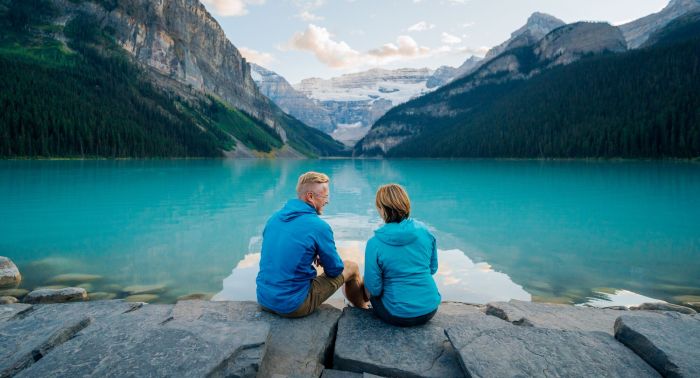
Lake Geneva, while renowned for its stunning lakefront, offers much more than just water views. Venture beyond the immediate shoreline and discover a tapestry of charming towns and attractions that enrich your experience. From historical sites to vibrant local markets, the surrounding areas hold a wealth of hidden gems waiting to be explored.
Nearby Towns and Cities
Lake Geneva is situated in a region brimming with charming towns and cities. Each offers its own unique appeal, from historic architecture to local businesses. Exploring these neighboring destinations adds a new dimension to your trip, allowing you to experience the broader cultural landscape of the area.
Getting Around
Several options facilitate travel beyond the lakefront. Renting a car provides the most flexibility, enabling you to explore at your own pace and visit multiple destinations. If preferred, ride-sharing services and local buses can be viable options for navigating between towns. Consider the distance and the desired level of convenience when selecting your mode of transportation.
Nearby Destinations
| Destination | Driving Distance (approx.) | Attractions | Recommended Activities |
|---|---|---|---|
| Geneva-on-the-Lake | 10-15 minutes | Historic downtown, shops, restaurants, and stunning views. | Stroll through the historic district, enjoy lunch at a local restaurant, or visit the Geneva-on-the-Lake Historical Society. |
| Williams Bay | 20-25 minutes | Known for its stunning natural beauty, local wineries, and art galleries. | Take a scenic drive along the lakeshore, visit a local winery, or explore the art galleries and shops. |
| Lake Geneva | 5-10 minutes | Multiple parks, historical sites, museums, and local attractions | Explore the various museums, visit the parks, or take a scenic boat ride on the lake. |
| Elkhorn | 30-40 minutes | Known for its quaint atmosphere, local businesses, and restaurants. | Explore the shops and restaurants, enjoy a relaxing walk or bike ride, or visit a local park. |
| Walworth | 20-30 minutes | A vibrant city with a variety of restaurants, shops, and entertainment options. | Enjoy shopping, dine at a restaurant, visit the Walworth Historical Society, or catch a performance at the local theater. |
Exploring these destinations enriches your experience beyond the immediate lakefront, offering a diverse range of attractions and activities.
Tips and Advice for Travelers
Embarking on a Lake Geneva getaway requires careful planning and a dash of preparedness. This section provides essential tips to ensure a smooth and enjoyable experience, highlighting potential challenges and offering solutions. From packing essentials to navigating local customs, this guide will empower you to make the most of your time at Lake Geneva.
Packing Essentials
Proper preparation is key to a comfortable and stress-free trip. A well-packed bag ensures you have everything you need for your activities, weather conditions, and potential emergencies.
- Comfortable walking shoes are crucial for exploring the lakefront and surrounding areas.
- Layers of clothing are essential for unpredictable weather. Lake Geneva’s weather can change quickly, so pack a light jacket, sweater, and a raincoat.
- Sunscreen, sunglasses, and a hat are vital for sun protection, especially during the warmer months.
- Insect repellent is recommended, particularly if you plan to spend time outdoors.
- Swimsuit and towel are necessary if you plan on taking a dip in the lake.
- A reusable water bottle is a practical way to stay hydrated and environmentally conscious.
- A small first-aid kit with essentials like bandages, pain relievers, and any personal medications is prudent.
Safety Considerations
Maintaining personal safety is paramount. Taking precautions against potential hazards and understanding local safety protocols ensures a secure and enjoyable trip.
- Be aware of your surroundings, especially at night, and avoid walking alone in poorly lit areas.
- Park in designated areas and never leave valuables visible in your vehicle.
- If you are swimming, always swim in designated areas and be aware of potential hazards like strong currents or submerged objects.
- Inform someone of your itinerary and expected return time.
- Carry identification and necessary documents, including copies of important information.
- Be cautious of strangers and avoid engaging in suspicious activities.
- Report any suspicious activity to local authorities immediately.
Local Customs and Etiquette
Respecting local customs and etiquette contributes to a positive and harmonious experience for everyone.
- Lake Geneva residents and visitors are generally welcoming and friendly. A simple “hello” or “thank you” goes a long way.
- Respect private property and follow posted regulations.
- When dining in restaurants, be mindful of noise levels and table etiquette.
- When visiting local shops or attractions, be respectful of the staff and other patrons.
- Refrain from loud or disruptive behavior in public areas.
Practical Tips
This table summarizes essential tips for a successful trip to Lake Geneva.
| Category | Details |
|---|---|
| Packing List | Comfortable shoes, layers of clothing, sunscreen, sunglasses, hat, insect repellent, swimsuit, towel, reusable water bottle, first-aid kit, identification, copies of important documents. |
| Safety Advice | Be aware of surroundings, park in designated areas, inform someone of your itinerary, be cautious of strangers, report suspicious activity, swim in designated areas. |
| Emergency Contacts | Local police department, hospital emergency number, your hotel/accommodation contact, emergency services, friends/family. |
Outcome Summary
In conclusion, Lake Geneva, Wisconsin, offers a diverse range of experiences for every traveler. From luxurious accommodations to exciting activities and a rich local culture, this guide has provided a thorough overview of everything you need to know to plan your dream trip. Enjoy the breathtaking scenery, delicious food, and memorable moments awaiting you in this stunning destination.
We hope this guide inspires your adventure!
